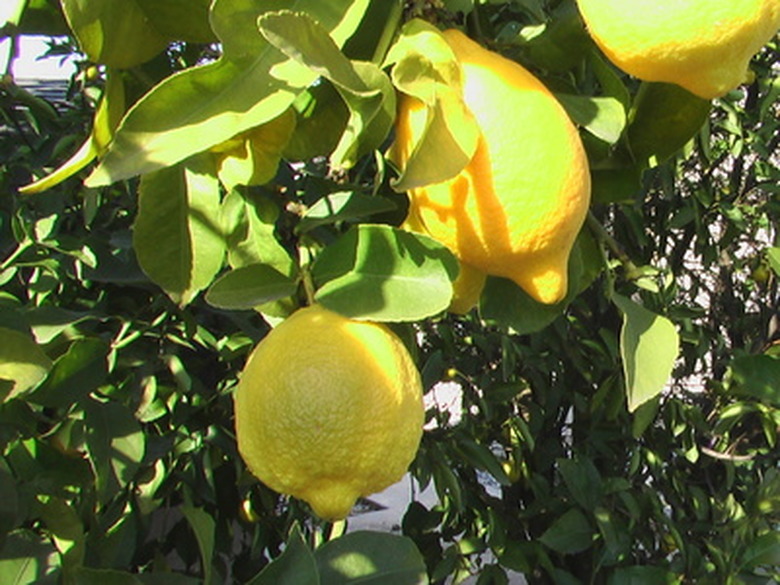Growth Stages Of A Lemon Tree
We may receive a commission on purchases made from links.
A lemon tree (Citrus limon, U.S. Department of Agriculture plant hardiness zones 9 through 11) can be a beautiful feature in a home or garden. The tree also gives off a fragrant citrus scent that enhances its surroundings. What's even better is that your lemon tree can bear fruit for you to use in your cooking and cocktails. When you're trying to grow lemons, it may be helpful for you to understand the different growth stages of the lemon tree.
Depending on cultivar, climate and cultural/environmental conditions, flowering may occur over a long period (December to March, after bud formation during the previous November), and harvest can be in summer, fall or winter because the period from flowering to harvest is so variable (from four to 12 months). Although the growth stages of a lemon tree follow a discrete pattern, these stages may appear to overlap or blend together because of a tree's extended flowering period and its long flower-to-harvest window.
Lemon Tree Youth
Lemon Tree Youth
Lemon trees are known to mature relatively quickly, with most trees beginning to mature in their second year. Lemon tree saplings are fast growers and need to be kept in warm temperatures to thrive. As they reach maturity, lemon trees become stouter in appearance with thicker foliage, and they can withstand colder temperatures, although extreme cold will affect the flowers and fruit.
Lemon trees mature more quickly than other citrus varieties and can begin bearing fruit after just one to three years of growth. If you want your lemon tree to start producing fruit more quickly, purchase a larger (and therefore more established and mature) tree.
Flowering in Lemon Trees
Flowering in Lemon Trees
At the beginning of the colder months, your lemon tree may begin the process of producing flower buds. The more buds your lemon tree produces, the more potential it has to bear greater quantities of fruit. If you slightly stress your lemon tree for water during the bud-growing period, you can encourage it to produce more flowers.
As the weather warms in spring, if your lemon tree has produced buds over winter they will start to bloom. These blooms, which are self-fertile, will eventually become the fruits of your tree. During these months, it is important to provide adequate water to your lemon tree to encourage fruit growth.
Lemon Tree Fruit Set
Lemon Tree Fruit Set
After the buds bloom, your lemon tree fruit will continue to grow. While watering remains important, it is also essential to prevent root rot. If your lemon tree is indoors, you will want to make sure it is in a pot with drainage holes. Keep soil moist but never damp or moldy.
Ripening Your Lemons
Ripening Your Lemons
Ensuring that you give your lemons enough time to ripen is essential to their taste and quality after picking. Lemons stop ripening as soon as they are picked from the tree, so they should be left until they look ready to eat — rich in color and of adequate size.
If you live in an area with cooler temperatures, once all of the lemons have been picked, your tree may enter a resting period during which you should not fertilize it. However, if you live in a climate that is always warm, your tree will then begin again with bud formation.
References
- The Old Farmer's Almanac: Growing Lemons & Oranges
- Clemson Cooperative Extension: Citrus
- Missouri Botanical Garden: Citrus limon
- Wisconsin Horticulture: Indoor Citrus
- UC Santa Cruz Center for Agroecology & Sustainable Food Systems: Citrus Offers Year-Round Options
- University of Florida IFAS Extension: Lemon Growing in the Florida Home Landscape
